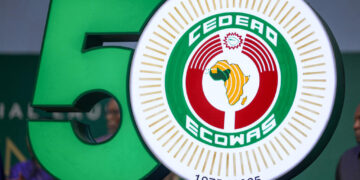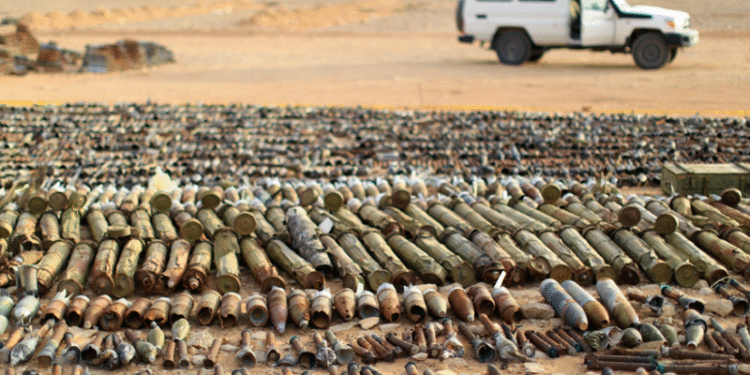Introduction
Across contemporary African geopolitics, the rhetoric of partnership and humanitarianism often conceals deeper strategic and economic motives. The concept of maligned interest captures this paradox, interventions framed as benevolent acts but in practice, perpetuate instability as well as dependency (Bywater, 2021; Lopes, 2024). One of the most striking manifestations of this dynamic is the North Atlantic Treaty Organisation (NATO)’s 2011 military intervention in Libya. Officially launched under the banner of protecting civilians during the Libyan civil war, the intervention known as Operation Unified Protector was authorised by the United Nations Security Council through Resolution 1973 (Williams & Bellamy, 2012). Its stated objectives were to enforce a no-fly zone, implement an arms embargo, and prevent mass atrocities against civilians. While NATO’s operation succeeded in weakening Muammar Gaddafi’s regime and supporting the Libyan rebels, it also unleashed a series of destabilising effects whose repercussions continue to reverberate across the African continent. The disintegration of the Libyan state triggered a massive outflow of arms and trained mercenaries, many of whom moved southward into the Sahel, a region already grappling with fragile governance and insurgent movements. In Mali, Niger, and Burkina Faso, the sudden influx of weapons and fighters intensified local conflicts and contributed to the emergence of transnational jihadist networks. What began as a humanitarian intervention thus evolved into a regional security catastrophe.
This article argues that NATO’s involvement in Libya represents a classic case of maligned interest in Africa, an intervention cloaked in moral legitimacy but driven by strategic imperatives. Beyond the rhetoric of protection, the operation advanced Western geopolitical goals, including the containment of migration routes, the preservation of Mediterranean security, and the reshaping of energy access. By sidelining the African Union’s peace initiatives and disregarding local contexts, NATO’s actions exemplify how external powers continue to define African security in ways that prioritise their own interests. The ensuing chaos in the Sahel demonstrates how interventions framed as humanitarian can, in fact, produce enduring instability and undermine regional sovereignty.
Context and Justification of the Intervention
The 2011 intervention in Libya marked one of the most consequential moments in the post–Cold War history of humanitarian military action. Its origins lay in the outbreak of the Libyan civil war, part of the broader wave of uprisings collectively known as the Arab Spring (Joffé, 2011; Abdelsalam, 2015). In February 2011, anti-government protests against Colonel Muammar Gaddafi’s four-decade rule escalated into violent confrontations, as the regime responded with heavy-handed military force (The Guardian, 2011). The rapid deterioration of the conflict, coupled with Gaddafi’s rhetoric of “no mercy” toward dissenters, prompted fears of imminent mass atrocities (Bellamy & Williams, 2012). Against this backdrop, the United Nations Security Council adopted Resolution 1973 on 17 March 2011, authorising member states to take “all necessary measures” to protect civilians, including the establishment of a no-fly zone and the enforcement of an arms embargo. This resolution became the legal foundation for NATO’s Operation Unified Protector, launched on 31 March 2011. The stated objectives were narrowly defined: to prevent attacks on civilians, to ensure the implementation of the arms embargo, and to protect humanitarian access (Thakur, 2011). In practice, however, the mission’s scope rapidly expanded beyond civilian protection to direct military support for the anti-Gaddafi rebels, including air strikes against Libyan government positions and infrastructure (Chivvis & Martini, 2014).
The intervention was framed within the emerging international doctrine of the Responsibility to Protect (R2P), a principle endorsed by the United Nations in 2005 (Paris, 2014). R2P asserts that when a state is unable or unwilling to prevent mass atrocities against its population, the international community has a moral obligation to intervene (Huttunen. 2024). Western governments invoked this doctrine to justify NATO’s actions, presenting the operation as a moral necessity to prevent genocide and uphold human rights. Proponents hailed it as a successful application of R2P that demonstrated the international community’s commitment to civilian protection. However, critical observers have argued that the intervention’s implementation revealed deep inconsistencies between its humanitarian rhetoric and its geopolitical execution (Chakma, 2025; Kuperman, 2013). Although Resolution 1973 explicitly ruled out “a foreign occupation force,” NATO’s operational conduct effectively pursued regime change, aligning closely with the strategic and political goals of certain Western states. France and the United Kingdom, with strong support from the United States, emerged as the principal architects of the campaign, driven in part by concerns about regional instability, oil security, and migration flows across the Mediterranean. Furthermore, the African Union (AU), which had advanced a roadmap for peaceful negotiation between Gaddafi and the rebels, was largely marginalised in the decision-making process (Murithi, 2013). This exclusion underscored the persistent imbalance in global governance, where African agency in resolving continental crises is often sidelined in favor of Western-led interventions.
In retrospect, the Libya intervention exposes the contradictions inherent in the politics of humanitarianism. While framed as an act of protection, NATO’s operation exceeded its UN mandate, destabilised Libya’s political structure, and set in motion a chain of events that would later engulf the Sahel in violence and insecurity. As this paper argues, this dissonance between rhetoric and outcome exemplifies the broader logic of maligned interest: the use of moral discourse to mask strategic pursuits, with Africa once again serving as the arena where global powers test and project their geopolitical ambitions.
3. The Collapse of the Libyan State and the Spread of Insecurity in the Sahel
The fall of Muammar Gaddafi in October 2011 marked not only the end of one of Africa’s longest-standing regimes but also the beginning of a profound regional crisis. Libya, once a centralised authoritarian state, rapidly fragmented into a patchwork of competing militias, tribal factions, and rival governments. The disintegration of state authority in Libya created what many scholars have termed a security vacuum, enabling the proliferation of arms, fighters, and extremist ideologies across North and West Africa (Alcaro & Pirozzi, 2014; Bøås & Torheim, 2013; Maio, 2023). Before 2011, Gaddafi had maintained a complex system of control built on patronage networks that extended across the Sahel. He financed rebel movements, mediated conflicts, and distributed resources to secure both domestic loyalty and regional influence (Anderson & Holmsten, 2019). When Gaddafi’s regime collapsed, these networks imploded. Thousands of Tuareg fighters who had served in the Libyan army, many originally from Mali and Niger, returned home heavily armed and disillusioned (Kanani, 2012). Their return ignited long-standing grievances in northern Mali, culminating in the Tuareg rebellion of 2012, which was soon hijacked by Islamist groups such as Al-Qaeda in the Islamic Maghreb (AQIM), MUJAO and Ansar Dine (Shaw, 2013).
The result was a cascading regional destabilisation. The uncontrolled flow of weapons from Libyan stockpiles, including surface-to-air missiles, machine guns, and ammunition, transformed the Sahel into one of the most militarised regions in the world. In the years that followed, the Sahel witnessed escalating insurgencies, humanitarian crises, and military coups, notably in Mali (2012, 2021), Burkina Faso (2022), and Niger (2023). Each of these upheavals can be traced, at least in part, to the post-Libya security disorder. The chain reaction underscores how maligned interests, dressed in humanitarian language, can yield long-term consequences that undermine the very stability they claim to defend. In sum, the NATO intervention in Libya did not simply remove a dictator; it unmade a regional security architecture. The Sahel’s descent into violence reveals how Africa often bears the structural fallout of decisions made in distant capitals. The rhetoric of protection, while morally appealing, masked deeper economic and strategic interests that perpetuated Africa’s dependency and vulnerability.
Maligned Interests and the Geopolitics of Intervention in Africa
From a strategic standpoint, Libya occupies a critical position in the Mediterranean basin, serving as a gateway between Africa, Europe, and the Middle East. Control over Libyan airspace and territory offered NATO a significant geopolitical advantage in an era of renewed great-power rivalry. Several scholars/analysts have argued that NATO’s intervention was part of a broader attempt to reassert Western military influence in Africa following the waning of U.S. dominance in Iraq and Afghanistan (Bağbaşlioğlu, 2024; Ferri, 2022; Johnston, 2019) The Libyan conflict provided an opportunity to demonstrate NATO’s continued relevance and operational capacity, particularly under the leadership of France and Britain, both of which sought to reclaim strategic prestige on the global stage (Chivvis & Martini, 2014).
Beneath the veneer of humanitarianism lay the political economy of intervention. Libya possesses one of the largest proven oil reserves in Africa and a relatively low extraction cost per barrel. Prior to 2011, much of Libya’s oil sector had been nationalised under Gaddafi’s government, with contracts favoring state control and limited Western access (Fiveable, 2024; Hemming, 2011). The post-Gaddafi liberalisation of the oil industry opened new avenues for European energy companies, particularly from France, Italy, and the United Kingdom, to secure concessions under the guise of reconstruction and democratic partnership (Mezran & Varvelli, 2017). Thus, the intervention not only reshaped the political order but also reconfigured resource ownership patterns, reinforcing Africa’s integration into global capitalist circuits on unequal terms.
The rise of jihadist insurgencies in the post-Libya Sahel further legitimised Western military presence on the continent. Under the rhetoric of counterterrorism, NATO members and allied powers expanded their footprint through initiatives such as the French-led Operation Barkhane, the U.S. AFRICOM base network, and various EU training missions (Mezran & Varvelli, 2017). However, these interventions have yielded limited security improvements while deepening local resentment and political instability (Cold-Ravnkilde & Ba, 2022). The pattern mirrors what Ferguson (1994) described as the “anti-politics machine” of development, an apparatus that depoliticizes structural injustices by framing them as technical problems solvable through military or managerial expertise. What emerges from NATO’s engagement is a portrayal of Africa as a passive frontier, a geography upon which external powers act, rather than a sovereign actor in global governance. African Union (AU) proposals for negotiated settlement during the Libyan crisis were dismissed as unrealistic, reinforcing the marginalisation of African diplomatic agencies (Abass, 2014; Ping, 2011). The subsequent exclusion of African perspectives from post-conflict reconstruction further entrenched dependency, demonstrating how maligned interests thrive within asymmetrical decision-making structures.
Conclusion
From the slave trade to structural adjustment, and from humanitarian intervention to counterterrorism, the thread of maligned interest persists, evolving with historical context but consistent in form. In each instance, Africa’s crises are framed as moral or security imperatives requiring external intervention. Yet beneath these narratives lie enduring pursuits: access to resources, geopolitical influence, and ideological dominance. This dynamic transforms Africa into “a laboratory of externally driven experiments,” where the discourse of partnership obscures the reality of control. The NATO intervention in Libya and its ripple effects across the Sahel reveal that Africa’s insecurity is not merely endogenous but co-produced by external interventions cloaked in humanitarian language. The continent remains trapped within a loop of dependence, where each crisis justifies new forms of external involvement. If the continent is to move beyond this cycle, a new vision of partnership is needed, one grounded in strategic autonomy, epistemic independence, and regional solidarity. Africa’s security architecture, led by the African Union and regional economic communities, must be strengthened not merely as instruments of external funding but as platforms of self-determined governance. The continent’s diplomatic capacity should not be reactive to crises framed by others, but proactive in defining its own priorities and moral imperatives. Equally important is narrative sovereignty, the ability to frame Africa’s challenges and aspirations through indigenous perspectives rather than borrowed vocabularies of crisis and rescue. As Kakai (2017) reminds us through the provocation “Don’t call me resilient”, Africa does not need to be celebrated for surviving structural violence; it demands the dismantling of those structures. This requires reimagining development, security, and governance through lenses that center justice, dignity, and accountability and not just survival.
Reference
Abass, A. (2014). The African Union’s Response to the Libyan Crisis: A Plea for Objectivity. African Journal of Legal Studies, 7(1), 123-147. https://doi.org/10.1163/17087384-12342043
Abdelsalam, E. (2015). The Arab spring: Its origins, evolution and consequences… four years on. Intellectual Discourse, 23(1), 119-139.
Akinlabi, A. A. (2025). French Operation Barkhane. African Journal of Political Science, 13(1), 84-90. https://doi.org/10.36615/qrcr6v78
Alcaro, R., & Pirozzi, N. (2014). Transatlantic Security from the Sahel to the Horn of Africa. Edizioni Nuova Cultura.
Anderson, M., & Holmsten, S. (Eds.). (2019). Political and Economic Foundations in Global Studies (1st ed.). Routledge. https://doi.org/10.4324/9781315717333
Bağbaşlioğlu, A. (2024). Rethinking the Implications of NATO’s Afghanistan Operation and Its Partnership for Peace in Central Asia: Is It the End of NATO’s Presence in Central Asia?. Bilig, (108), 1-26. https://doi.org/10.12995/bilig.10801
Bywater, M. (2021). The humanitarian alibi: An overview and a redefinition. Journal of International Humanitarian Action, 6(1). https://doi.org/10.1186/s41018-021-00106-7
Bøås, M., & Torheim, L. E. (2013). The Trouble in Mali—corruption, collusion, resistance. Third World Quarterly, 34(7), 1279–1292. https://doi.org/10.1080/01436597.2013.824647
Chakma, N. (2025). A Critical Analysis and Examination of the Clock-Angle problem and its directional inconsistencies. https://doi.org/10.55277/researchhub.ihvr0fdj.2
Chivvis, C. S., & Martini, J. (2014). Libya After Qaddafi: Lessons and Implications for the Future. RAND Corporation. http://www.jstor.org/stable/10.7249/j.ctt6wq7w7
Cold-Ravnkilde, S. M., & Ba, B. (2022). Actors and drivers of conflict in the Sahel: Unpacking ‘new climate wars’. Danish Institute for International Studies (DIIS). DIIS Report Vol. 2022 No. 04
Ferguson, J. (1994) The Anti-Politics Machine: Development, Depoliticization, and Bureaucratic Power in Lesotho. University of Minnesota Press, Minneapolis.
Ferri , C. (2022). Three Interventions That Show NATO. https://www.leftvoice.org. October 20, 2025. https://www.leftvoice.org/three-interventions-that-show-natos-imperialist-role/
Fiveable. (2024). Libya nationalized oil assets – History of the Middle East – 1800 to Present. https://fiveable.me/key-terms/history-middle-east-since-1800/libya-nationalized-oil-assets
Hemming, A. D. (2011). Why the Oil Companies Decided Qaddafi Has to Go. www.counterpunch.org. October 20, 2025. https://www.counterpunch.org/2011/04/08/why-the-oil-companies-decided-qaddafi-has-to-go/
Huttunen, M. (2024). A tale of two sovereigns: the responsibility to protect and the competing notions of responsible sovereignty. The International Journal of Human Rights, 29(5), 773–794. https://doi.org/10.1080/13642987.2024.2429467
Joffé, G. (2011). The Arab Spring in North Africa: Origins and prospects. The Journal of North African Studies, 16(4), 507-532. https://doi.org/10.1080/13629387.2011.630881
Johnston, S. (2019). Nato. www.belfercenter.org. October 20, 2025. https://www.belfercenter.org/publication/natos-lessons-afghanistan
Kaika, M. (2017). ‘Don’t call me resilient again!’: the New Urban Agenda as immunology … or … what happens when communities refuse to be vaccinated with ‘smart cities’ and indicators. Environment and Urbanization, 29(1), 89-102. https://doi.org/10.1177/0956247816684763
Kanani , B. (2012). Gadhafi. abcnews.go.com. October 20, 2025. http://abcnews.go.com/blogs/headlines/2012/04/dead-dictators-impact-gadhafi-guns-africa
Kuperman, A. J. (2013). A Model Humanitarian Intervention? Reassessing NATO’s Libya Campaign. International Security, 38(1), 105–136. http://www.jstor.org/stable/24480571
Lopes, C. (2024). The Self-Deception Trap. Springer Nature.
Maio, M. (2023). The Arab Spring, the rise of terrorism in the Sahel and the evolution of peace and counterterrorism operations in the region. [master’s thesis]. University of Uppsala
Mezran, K., & Varvelli, A. (2017). Foreign Actors in Libya. Ledizioni.
Murithi, T. (2012). The African Union and the Libya Crisis: Situating the Responsibility to Protect in Africa. Journal of African Union Studies, 1(1), 83–88. https://www.jstor.org/stable/26893822
Paris, R. (2014). The ‘Responsibility to Protect’ and the Structural Problems of Preventive Humanitarian Intervention. International Peacekeeping, 21(5), 569–603. https://doi.org/10.1080/13533312.2014.963322
Ping, J. (2011). African Union role in the Libyan crisis | Pambazuka News. www.pambazuka.org. October 20, 2025. https://www.pambazuka.org/african-union-role-libyan-crisis
Shaw, S. (2013). Fallout in the Sahel: The geographic spread of conflict from Libya to Mali. Canadian Foreign Policy Journal, 19(2), 199-210. https://doi.org/10.1080/11926422.2013.805153
Thakur, R. (2011). Libya and the Responsibility to Protect: Between Opportunistic Humanitarianism and Value-Free Pragmatism. Security Challenges, 7(4), 13–25. http://www.jstor.org/stable/26467113
The Guardian,. (2011). Libya protests: More than 100 killed as army fires on unarmed .. www.theguardian.com. October 20, 2025. https://www.theguardian.com/world/2011/feb/20/libya-protests-benghazi-muammar-gaddafi
Williams, P. D., & Bellamy, A. J. (2012). Principles, Politics, and Prudence: Libya, the Responsibility to Protect, and the Use of Military Force. Global Governance, 18(3), 273–297. http://www.jstor.org/stable/23269958





























